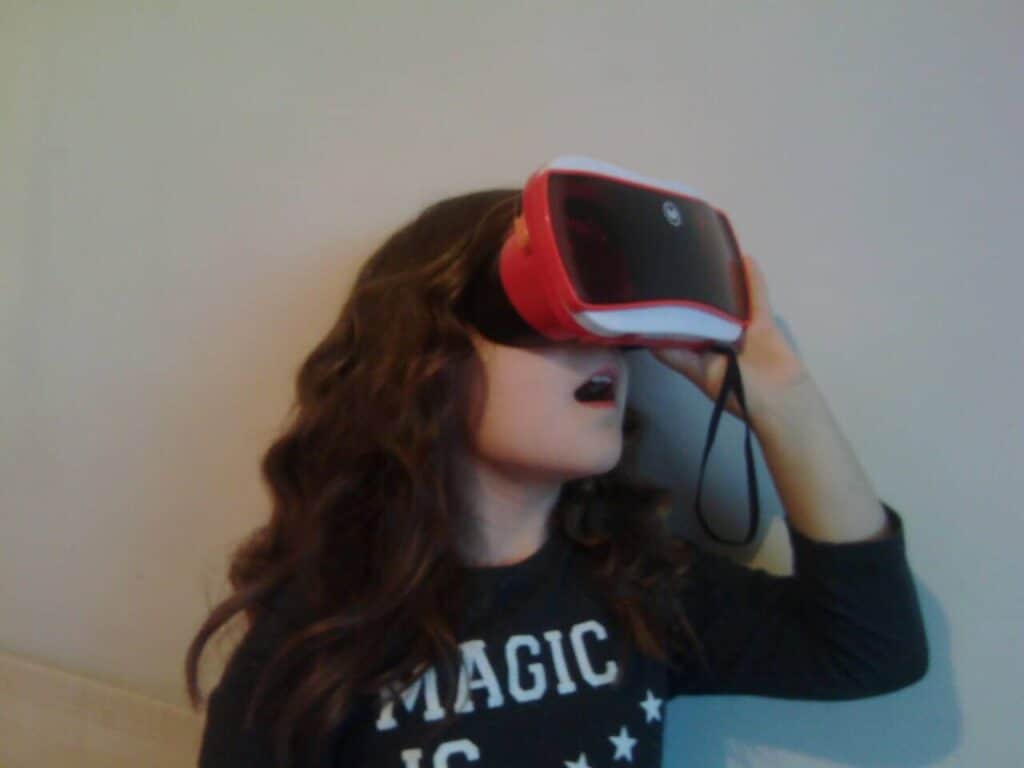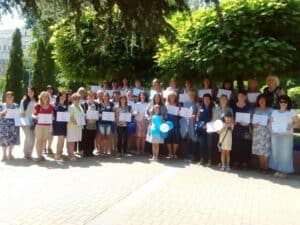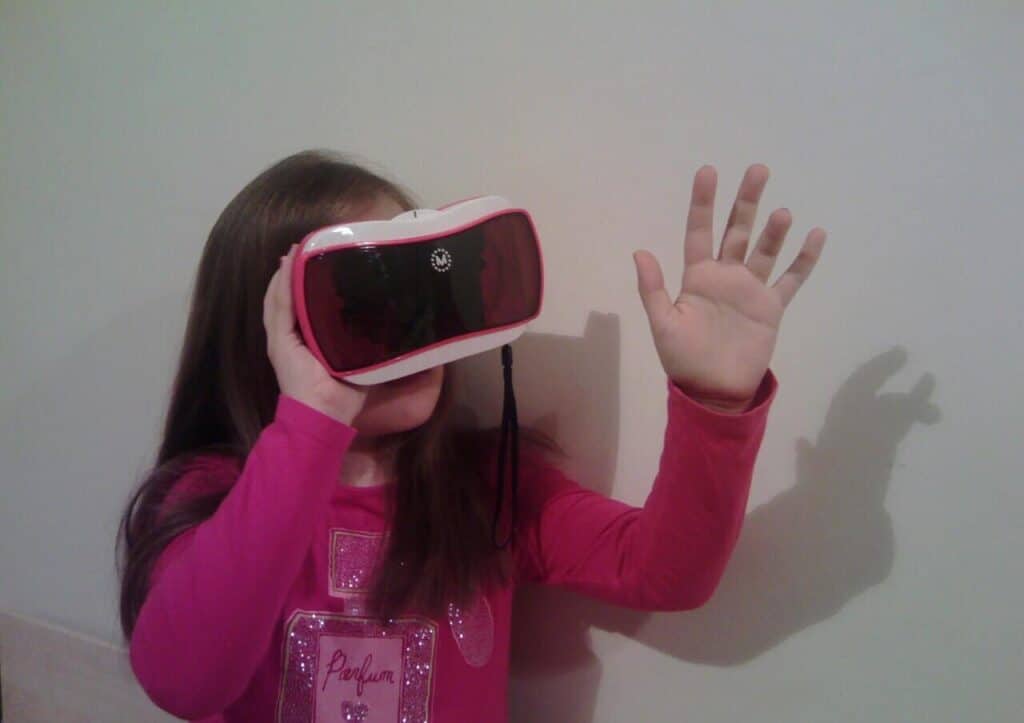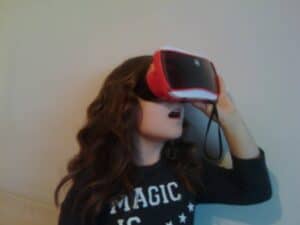At conferences and our workshops we have been often asked questions about Virtual Reality and children in elementary schools. While the headsets like Oculus and HTC Vive are designed for 13 and up simply based on head measurements, the beauty of cardboard is that children of almost any age are able to use it. The Google Expeditions program has been a great initiative that has brought immersive experiences to children around the world. Google doesn’t provide numbers but the Expeditions app is available in 123 countries and counting. It’s been translated into 40 languages (including Bulgarian), but the Expeditions content is in English only.
Using Google Cardboard, the program allows teachers to pair lessons in class with VR field trips. There are very few requirements in terms of age. But when it comes to virtual reality and children, Google recommends that kids should be seated rather than standing or moving around.
Here is a short video of Google expeditions program.
Virtual Reality and children
The youngest person I have tried VR is my nine year old niece Dayna. During a visit back home this summer I brought a VR headset for her to try. As you might imagine, she already uses an iPad, a laptop, and multiple cell phones. She has produced more multimedia by the age of nine than I probably did in the first twenty years of my life. My primary tools were a 35 mm Kodak camera and later on, some groundbreaking, but excruciatingly slow, PCs.
Having access to a variety of apps on mobile devices, Dayna’s a completely different story. She produces a constant flow of digital artifacts from simple drawings to presentations, short clips, her own blog and more. And of course, she shares them with me – even though we are usually thousands of miles apart.

She only needed to watch me slide the iPhone into the View Master ones and without a single question, she took off on her own. With no training or tutorial she was exploring the bottom of the ocean, sites in New York and of course, the solar system. It was only after she experienced the VR that she came with a hundred questions on whether she can do X and Y and more. For her, the lines between reality and VR blurred as she continued to try new experiences.
Remarkably, she did not find any of the experiences extraordinary. She just liked seeing and experiencing new ones. She loves watercolors, dancing and performing on stage. But she also loves using technology which is just a part of her experience growing up. And as someone who is born into a culture of sharing, she also loved showing VR to her friends.
Virtual Reality workshop

The following day, she assisted me during an innovation in education event with over fifty K-12 teachers. There she was in the VR portion, explaining effortlessly to everyone how the VR headset works. Dayna and students like her are on a digital continuum that is far different from our own. And far different from their parents and their teachers. They do not see technology as simply a productivity, communication or entertainment tool. They just see it as constant part of their lives. It is just the way you do things. Unlike adults they do not have to learn technology for technology’s sake, instead technology is how you do things.
Young students expect far more from their tech tools that we ever did, despite our high expectations. It helps them navigate the world. Unlike their teachers and parents, young age children today are not simply observing the world. They interact with it in ways that are increasingly mediated with technology. Technology today is not passively delivering content as it did for us with TVs and movies.
Most important, technology is no longer the privileged realm of experts. Kids as young as 8 and 9 can use a mobile phone and produce a movie. Through apps like Snapchat they augment and express their feelings in a matter of seconds. And in platforms like Snapchat, the images disappear. No need to save them, they are on to the next moment of creative acts. A constant stream of creativity.
For most adults VR is a dramatic experience, one they describe as vivid, different and often provoking strong emotions. In contrast, kids experiencing VR content today react to it with joy, curiosity and questions. In many ways, most kids I have introduced VR to don’t have questions on how it works. Instead they ask, what else I can do with it? Think about that – it is question we’ve seen very few adults ask when try virtual reality. Or any new technology for that matter.
So, whether it is VR, AR or MR, the young students today are going to continue to ask for more from both educators and developers. You’ve been forewarned!
The impact of Virtual Reality on young children
There are still concerns and questions about the possible negative impact of VR and children. Is it addictive? Is it bad for the eyes or the brain? How long should young students use it? We do not have the answers yet and there is a scarcity of information on the subject, but studies are under way. The Oculus Rift and Samsung’s Gear VR headsets are recommended for ages 13+, while Sony’s recommendation for PlayStation VR is ages 12 and up. HTC’s Vive is not designed for children, according to the company. Google said its relatively low-tech Cardboard headset should be used by kids under adult supervision and on their Expeditions site they have 7 and up. Like with other immersive media, for example movie and games it is important to know children will feel comfortable with the content. At a young age children have difficulty distinguishing reality from fiction. The power of VR is that it puts you in the scene and even as an adult, it can be difficult to distinguish reality from the illusion.
That means it’s critical that the content selected for virtual reality and children is appropriate and is not going to cause trauma. Virtual field trips to museums, national parks, aquariums and historic sites make for great experiences for kids, who often do not have the opportunity to travel to them.
Over the years, I have brought Dayna many photos and books about New York. But the VR trip gave her a new immersive way to experience it and the level of engagement far more direct and focused. It was no longer about my life in New York but about her own trip. The story changed from being my story to becoming hers. This in essence is one of the best arguments for using virtual reality with young children in education.
My best practice is to not imagine the world or even the classroom in VR but rather find the place for it whether at school or work. Not everything needs to be turned into VR and both educators and developers need to look for experiences that work in virtual reality. Hopefully, we have learned from earlier efforts that simply digitizing resources does not automatically lead to better learning experiences.

Children teaching us
Of course, there’s much that children need to learn from adults in understanding the world and their roles within it. But as I watch Dayna and other children use technology, I see how much we have to learn from them. They are growing up in a different world. What we see as innovation is simply their baseline. What makes us marvel in wonder makes them ask, what else can I do with it? In another ten years when Dayna has to turn in a project in Higher Education, it probably will be a virtual world she has created. And it will mark a level of creativity that we could never have imagined. It’s a world that I cannot wait to step into.
Maya Georgieva is an EdTech and XR strategist, futurist and speaker with more than 15 years of experience in higher education and global education policy. Her most recent work focuses on innovation, VR/AR and Immersive storytelling, design and digital strategy. Maya actively writes and speaks on the topics of innovation, immersive storytelling and the future of education and consults organizations and startups in this space.

